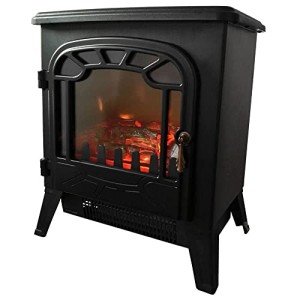Ten Fireplacess That Really Make Your Life Better
Fireplaces in the UK: A Comprehensive Guide
Fireplaces have long been an integral part of British homes, using both visual appeal and practical heat. As the weather condition turns cold, the appeal of a cozy fire beckons, transforming any living area into a sanctuary. In Buy Fireplace , we will check out the various kinds of fireplaces available in the UK, factors to consider for setup, upkeep pointers, and responses to often asked questions about fireplaces.
Kinds of Fireplaces
When choosing a fireplace for a UK home, numerous choices are readily available, each with unique features and benefits. The following table summarizes the main types of fireplaces popular in the UK:
Fireplace Type
Description
Pros
Cons
Open Hearth
Traditional fireplaces that burn wood or coal, providing a rustic feel.
Authentic atmosphere; great heat circulation
Less energy-efficient; needs chimney maintenance
Gas Fireplaces
Use gas or lp; can be direct vent or ventless.
Immediate heat; easy to run; cleaner burning
Preliminary setup expense; might require gas line
Electric Fireplaces
Imitate a flame using LED lights and offer heat through electrical energy.
Safe; simple to set up; no flue needed
Less genuine; higher operating expenses
Wood-burning Stoves
Closed-system fireplaces that burn logs, providing high performance.
High heat output; eco-friendly when utilizing sustainable wood
Limited visual compared to open hearth
Bioethanol Fireplaces
Environment-friendly option that burns bioethanol, producing real flames.
No chimney required; versatile style alternatives
Can be expensive to run; restricted heat output
Benefits and drawbacks of Each Type
Open Hearth
- Pros:
- Provides character to any home.
- Efficient heat circulation due to open flames.
- Cons:
- Less energy-efficient and more smoke than modern choices.
- Needs regular cleaning and maintenance of the chimney.
- Pros:
Gas Fireplaces
- Pros:
- Easy to manage and operate with the flick of a switch.
- Cleaner option with less soot accumulation.
- Cons:
- Requires a gas supply and installation costs can be high.
- May not offer the very same atmosphere as a traditional fire.
- Pros:
Electric Fireplaces
- Pros:
- Simple installation with no chimney or flue required.
- Is available in different designs, resembling traditional alternatives.
- Cons:
- Lacks the realism of genuine flames and can end up being expensive with continuous use.
- Pros:
Wood-burning Stoves
- Pros:
- Highly effective and creates significant heat.
- Sustainable resource when using properly sourced wood.
- Cons:
- Requires additional space for log storage and regular upkeep.
- Pros:
Bioethanol Fireplaces
- Pros:
- Flexible positioning due to no need for traditional venting.
- Clean-burning and minimal effect on indoor air quality.
- Cons:
- Can be less economical for continual use compared to gas or wood.
- Heat output is less efficient for larger areas.
- Pros:
Installation Considerations
When setting up a fireplace in a UK home, numerous elements need to be taken into account:
- Building Regulations: Ensure compliance with local building regulations and safety guidelines.
- Chimney and Flue: Determine the need for a chimney or flue system based on the kind of fireplace picked.
- Ventilation: Proper ventilation is essential for security, specifically with gas, wood, and bioethanol options.
- Area: Consider the best place for the fireplace to make the most of heat circulation and aesthetic appeal.
- Professional Help: Engaging an expert installer can guarantee a safe and precise setup tailored to the specific kind of fireplace.
Maintenance Tips
Routine upkeep of a fireplace is necessary for both safety and efficiency. Follow these guidelines to keep your fireplace in peak condition:
- Chimney Sweeping: Have your chimney professionally swept at least once a year to avoid blockages and decrease fire risk.
- Inspect for Damage: Regularly check for leakages, cracks, or damage, particularly in gas and wood-burning fireplaces.
- Clean the Surroundings: Ensure the area around the fireplace is devoid of dust and combustible products.
- Check Carbon Monoxide Detectors: Test detectors routinely, especially in homes with gas-burning home appliances.
- Shop Wood Properly: If utilizing a wood-burning range, store wood in a dry area to decrease wetness content.
Regularly Asked Questions
What is the best kind of fireplace for a small space?
For small spaces, electric fireplaces or bioethanol models are often suggested due to their smaller size, security functions, and looks.
Are electric fireplaces less expensive to run than gas?
Electric fireplaces typically have a lower upfront cost, but depending upon electrical energy rates, they can be more costly to operate long term compared to gas.
Do wood-burning ranges need a great deal of maintenance?
While they do require some upkeep, such as cleaning and routine chimney sweeper, numerous property owners discover that modern wood-burning ranges are effective and relatively low maintenance compared to traditional open hearths.
Can I set up a gas fireplace myself?
While some property owners may try DIY installation, it is extremely suggested to work with a professional for gas fireplace setups due to safety issues and regulative compliance.
How can I make the most of the heat output of my fireplace?
To optimize heat output from any fireplace, think about the following:
- Keep windows and doors closed throughout usage.
- Use heat-efficient logs or fuels.
- Guarantee appropriate air flow around the fire.
- Utilize fans or blowers that can circulate warm air throughout the space.
Fireplaces stay a treasured element within UK homes, supplying heat, appeal, and an inviting environment. Offered the range of choices and their distinct functions, property owners can pick the best fireplace to complement their living space while guaranteeing security and performance. With regular upkeep and a clear understanding of the setup requirements, anybody can delight in the beauty and comfort of a fireplace for years to come.
